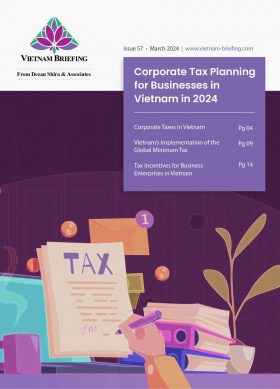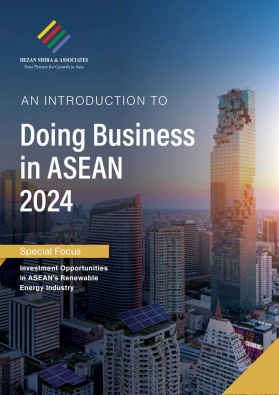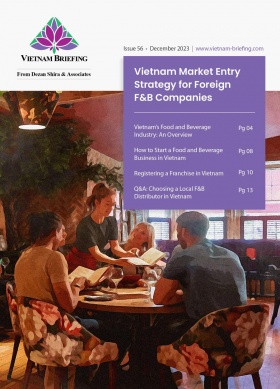Why Cambodia’s Funan Techo Canal Project is Worrying Vietnam
Despite the positive outcomes predicted by the Cambodian government, the Funan Techo Canal project that will establish a waterway linking Phnom Penh to its coastal province Kep, has prompted socioeconomic, political, and environmental concerns from Vietnam, which stands to be the country that will be affected most by the project.
On April 2, 2024, Deputy Prime Minister, and First Vice-Chairman of the Council for the Development of Cambodia (CDC), Sun Chantol, unveiled plans to commence construction work on the Cambodian Funan Techo Canal project this year.
Positioned as the cornerstone of Cambodia’s bid to emerge as a pivotal logistic and economic hub within Southeast Asia, the Funan Techo Canal stands as the region’s most recent large-scale infrastructure project. This project aims to link different areas of Cambodia, promising a surge in economic opportunities by enhancing connectivity and facilitating the seamless movement of goods and people across the country.
While the Funan Techo Canal holds promises for catalyzing economic growth, it has sparked notable apprehensions among local communities and neighboring countries, especially Vietnam.
Below we get into the available information on the Funan Techo Canal project while looking into its transformative potential and shedding light on key concerns regarding the project’s outcomes.
What is the Funan Techo Canal project?
The ambitious Funan Techo Canal project marks a significant stride in Cambodia’s infrastructural evolution, proposing to dig a 180-kilometer canal connecting Phnom Penh Autonomous Port to the coastal province of Kep, ultimately opening onto the South China Sea. Once completed, the canal will stand as the Kingdom of Cambodia’s first capital-to-coastal waterway stretching through key regions, such as Kadal, Takeo, and Kampot.

Source: Khmer Times
According to the project’s blueprint, the Funan Techo Canal is expected to be 100 meters wide upstream and 80 meters downstream with a total depth of 5.4 meters. This design consideration, coupled with the provision of two shipping lanes, ensures the seamless passage of vessels of up to 3,000 deadweight tonnages in opposite directions simultaneously.
Furthermore, its infrastructure plan includes the construction of three waterway dams, eleven bridges, and 208-kilometer sidewalks, ensuring safe navigation and seamless connectivity.
With a predicted cost of US$1.7 billion, the Funan Techo Canal has a targeted completion date earmarked for 2028.
Project objectives
The Funan Techo Canal presents a multifaced set of objectives, poised to reshape and develop Cambodia’s economic landscape while also addressing challenges in various sectors. Key objectives include:
- Enhancing connectivity and economic expansion: Central to the Funan Techo Canal’s objective is the linkage of disparate regions of Cambodia while promoting economic growth. By establishing a navigable water route from Phnom Penh’s port to Kep province, the canal will create more affordable access to both domestic and international markets. This will facilitate seamless import and export of goods, spurring trade and commerce. Furthermore, the project is also expected to create employment opportunities for the 5 million residents along its route without burdening the nation’s external debt.
- Strengthening infrastructure and transportation: The necessity of the canal for significant investment in infrastructure, such as roads, bridges, and waterways, will propel a noteworthy overall improvement of the nation’s transportation system. These developments will contribute to the enhancement of overall transportation networks, thereby improving access to isolated areas, and fostering regional integration and economic growth.
- Promoting environmental sustainability: The Funan Techo Canal is not only envisioned as a driver of Cambodia’s economic expansion but also as a catalyst for environmental sustainability. Its capacity to alter water courses is, in fact, anticipated to revolutionize water resource management, thereby driving the development of the Kingdom’s agricultural sector, and enhancing flood mitigation and water conservation efforts. Furthermore, the Funan Techo Canal project also aims to create a healthy environment, opening up a wide plethora of opportunities for the promotion of ecotourism in the area.
- Attracting foreign investment: The project is also part of Cambodia’s growing effort to attract foreign direct investments (FDI). By establishing improved connectivity with both domestic and global markets, the Funan Techo Canal is anticipated to enhance the country’s attractiveness as an investment destination.
China’s involvement in the project
Following a meeting in September 2023, China’s China Bridge and Road Cooperation (CBRC) signed an agreement with Cambodia to finance the construction of the canal. Shouldering the entire US$1.7 billion financial burden needed for the realization of the project, CBRC established itself as the major stakeholder of the Funan Techo Canal.
The rationale behind China’s significant investment in the project can be justified by multiple factors:
- Economic return: According to the contract stipulated, China’s status as a major stakeholder in the project confers upon it exclusive managerial authority over the canal for a duration spanning 40 to 50 years. During this period, China retains full control over operational aspects, including toll collection – drivers are expected to pay between US$12 for a small car and up to US$60 for a cargo truck one-way travel on the expressway. Only upon the lapse of the 50 years, the management of the canal will be transferred to Cambodia.
- Belt and Road Initiative (BRI): In the broader framework of China’s BRI, the Funan Techo Canal plays a key role in enhancing regional connectivity and catalyzing China’s pursuit of high-quality development. The canal will propel the full execution of the Industrial Development and the Rice and Fish Corridors.
- Enhanced influence in the region: China’s investment in the area aligns with the country’s overarching ambition of bolstering economic, diplomatic, and geopolitical ties with Phnom Penh. The substantial investment deepens Cambodia’s economic interdependency with Beijing, thereby amplifying China’s influence in the region. By positioning itself as a key economic partner of Cambodia, China is poised to exert greater influence also in shaping dynamics in Southeast Asia.
Key areas of concern
Despite the positive outcomes predicted by the Cambodian government, the Funan Techo Canal project has prompted a wide spectrum of concerns, particularly from Vietnam, which stands to be the country that will be affected most by the project.
Socio-environmental impact
Vietnam’s initial apprehension primarily centers around the potential environmental impact that the Funan Techo Canal might have on the Mekong region.
Of particular concern is the projected alteration of water flow within the Mekong River. Studies conducted by the US-based Stimson Center’s Southeast Asia Program suggest that the canal’s construction, as envisaged, may act as a levee, preventing water from reaching crucial areas of the Mekong Delta in Southern Vietnam. In essence, the canal could act like a dam, consequently resulting in the creation of a dry zone south of the canal and wet zones to its north.
Such an alteration of the water stream would also significantly impact agricultural activities and endanger the habitat of vulnerable species in the area.
Furthermore, Cambodian local communities have also voiced their concerns regarding the project. The anticipated realization of the Funan Techo Canal would require the displacement of an unspecified number of communities out of the 1.5 million Cambodians currently residing along its proposed route. This would result in considerable disruption and discomfort for these communities and their local activities.
Economic impact
Another area of concern is the economic impact that the new canal would have on Vietnam.
Currently, Cambodia heavily relies on Vietnamese strategic ports, located along the Mekong Delta’s mouth, for importing raw materials from China and exporting finished products to the US and Western markets. Since 2011, around 30 million tons of goods have been transported across Vietnam-Cambodia waterway routes.
The construction of the Funan Techo Canal would potentially disrupt this reliance, as Cambodia would increasingly depend on its own waterway transportation. This shift would directly impact Vietnam’s shipping earnings from Cambodian trade.
By providing an alternative route for Cambodian import and export activities, linking Phnom Penh’s port to a would-be deepwater port in Kep province on the Gulf of Thailand, the canal threatens the profitability of Vietnam’s Cai Map and other ports near Ho Chi Minh City, which until now have served as a primary gateway to the South China Sea.
South China Sea dispute
One final pressing concern surrounding the Funan Techo Canal project pertains to China’s significant involvement and its potential impact on the ongoing South China Sea dispute.
Cambodia’s deepened economic reliance on Beijing is particularly worrisome. The latter not only suggests a decreasing influence of Vietnam in the area, but it also raises concern for a possible transition into political sway, leading to Cambodian unwavering support for China in regional and international affairs.
This heightened dependency underscores concerns regarding the project’s possible “dual use” nature, wherein alongside promoting socio-economic development, canal facilities could serve as a platform for intensifying Chinese military presence within Cambodian territory.
Of significant concern is the canal’s depth capacity to accommodate military vessels entering from the Gulf of Thailand and approaching the Cambodian-Vietnam border. This represents a strategic concern for Vietnam, as it could potentially shift the balance in China’s favor in the context of the South China Sea dispute. Vietnam, grappling with the most extensive overlapping territorial claims with China in the region, faces the prospect of increased Chinese assertiveness and influence, further complicating an already tense geopolitical landscape.
Outlook
The Funan Techo Canal project embodies Cambodia’s aspiration for economic growth and affirmation as a powerhouse in Southeast Asia. However, in reaching the envisioned objectives, there are socioeconomic and political challenges that should not be underestimated.
About Us
Vietnam Briefing is published by Asia Briefing, a subsidiary of Dezan Shira & Associates. We produce material for foreign investors throughout Asia, including ASEAN, China, and India. For editorial matters, contact us here and for a complimentary subscription to our products, please click here. For assistance with investments into Vietnam, please contact us at vietnam@dezshira.com or visit us at www.dezshira.com.
Dezan Shira & Associates assists foreign investors throughout Asia from offices across the world, including in Hanoi, Ho Chi Minh City, and Da Nang. We also maintain offices or have alliance partners assisting foreign investors in China, Hong Kong SAR, Dubai (UAE), Indonesia, Singapore, Philippines, Malaysia, Thailand, Bangladesh, Italy, Germany, the United States, and Australia.
- Previous Article Vietnam Law on Personal Data Protection: Latest Developments and Insights
- Next Article Vietnam Adopts Hydrogen Energy Strategy to Boost Energy Transition








